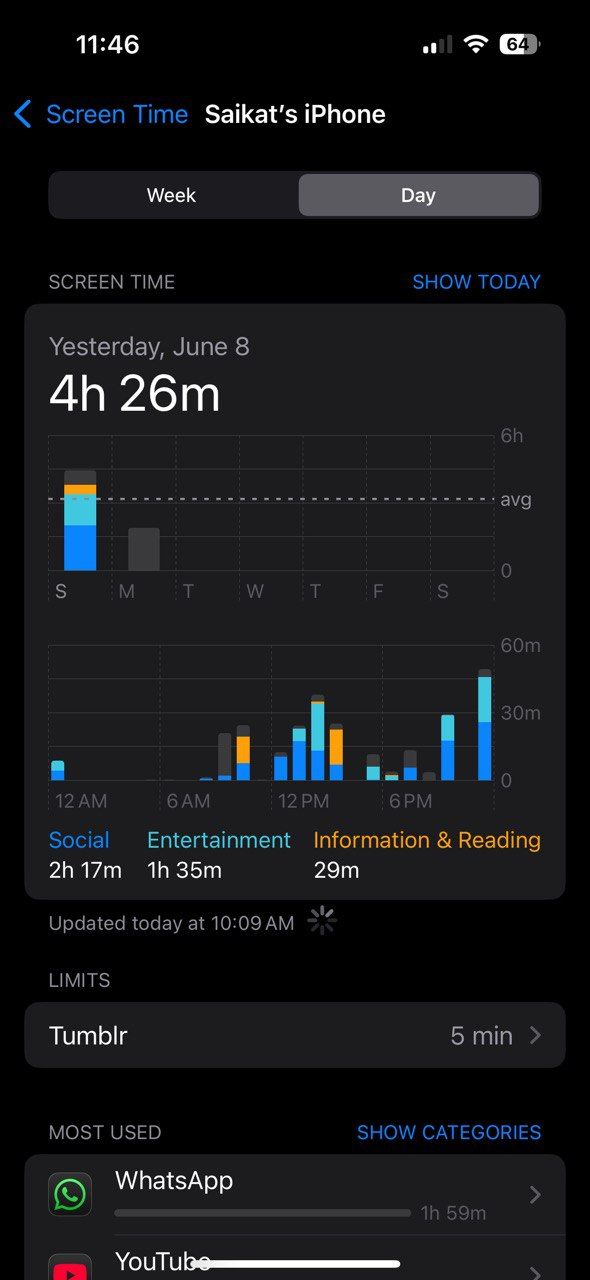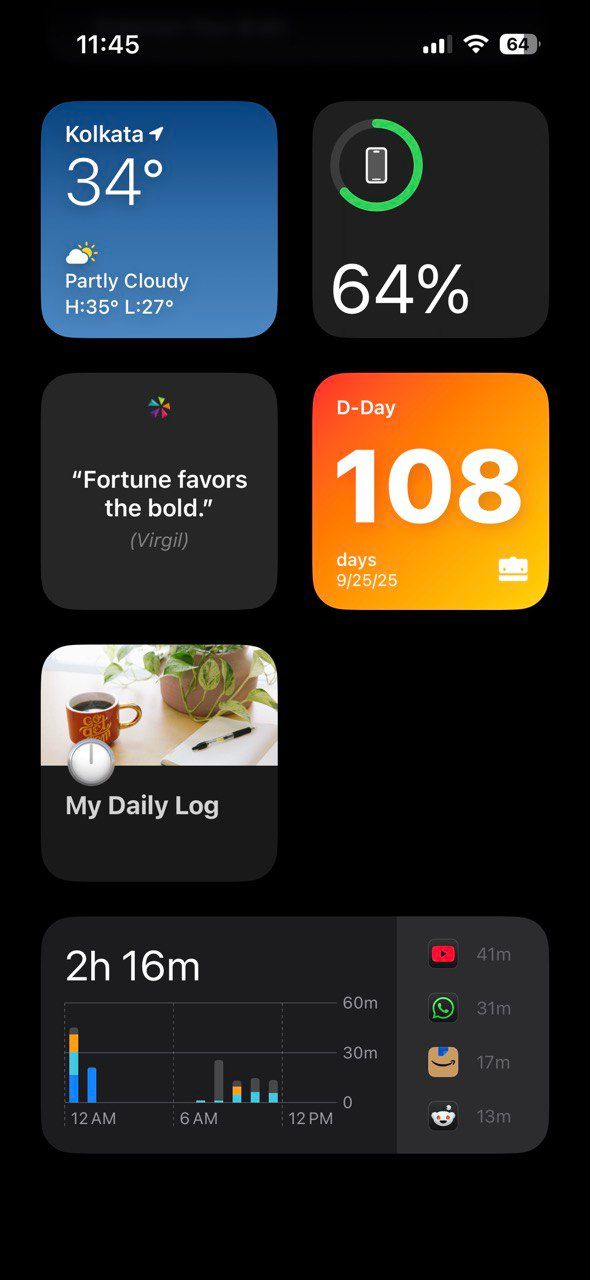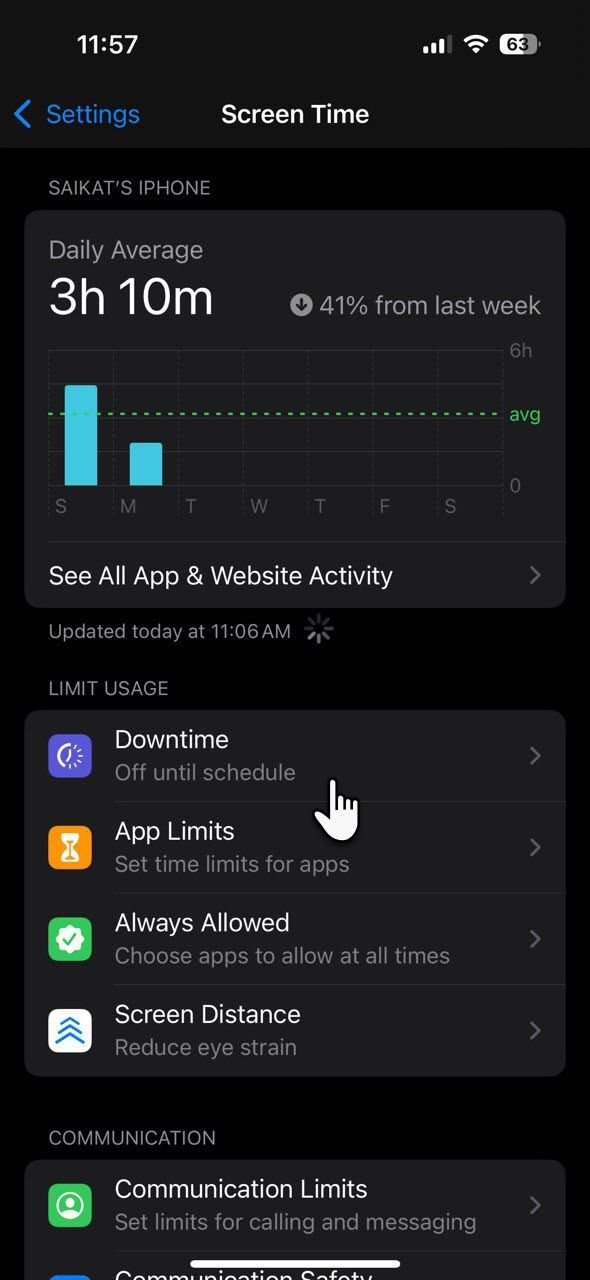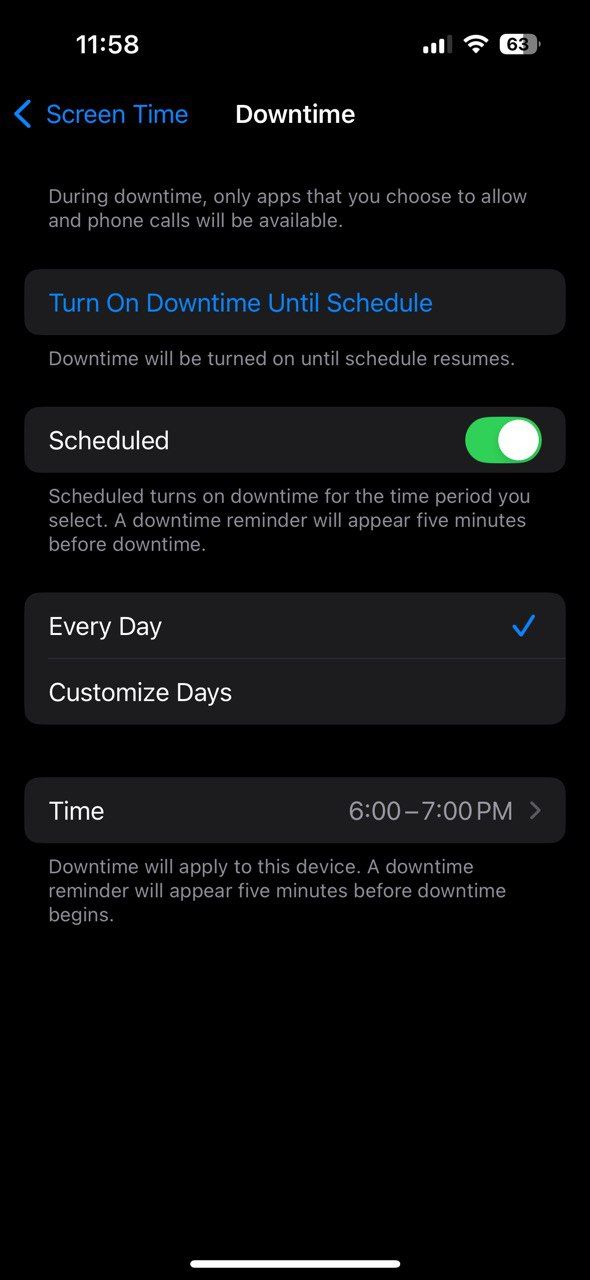None of us admits to a phone addiction. Neither did I, until I checked my iPhone’s Screen Time report. The number of hours lost to social media scrolling, endless app hopping, and distractions made me do a double-take.
So, I decided to use these cold, hard, shocking stats to take back control with some tiny habit changes. You too can try these tips on an iPhone (or an Android with Digital Wellbeing).
1
Look at Screen Time Stats Without Guilt
The first step was the hardest. I had to look at my screen time numbers honestly, without beating myself up. I opened Screen Time on my iPhone, expecting to feel ashamed. Instead, I treated it like a report card for my digital habits.
This data isn’t there to judge you. The numbers just paint broad strokes, telling you where your time goes. For me, seeing exactly how many minutes I spent on Instagram or YouTube helped me realize how I wasn’t using my phone consciously; I was just reacting to FOMO (Fear of Missing Out), notifications, or boredom.


Instead of guilt, I planned to use the Screen Time stats to get a lot of free time back. Knowing the facts allowed me to spot patterns. For example, my phone use spikes at noon around lunch and in the evenings. Social media dominates my daily screen time, with smaller chunks spent on news apps and work. As you can see below, I also set up a Screen Time widget for easier access.
Don’t judge. Simply observe because some usage is necessary, just like breathing. Let Screen Time be your mirror. It’s hard to change what you don’t see.
2
Set Intentional Screen Time Reduction Goals
After getting a clear picture, I needed a plan. I set small, specific goals based on the stats, which often say 4-5 hours of daily usage. For example, I aimed to cut 30 minutes off social media daily over the next week.
I used the Screen Time app limits to help enforce these goals. It’s surprisingly effective. When you hit your limit, your phone reminds you and often locks you out of the app unless you override it. This nudge made me mindfully pause and rethink whether I wanted to keep scrolling.
I started noticing the time of my first Pickups. The first app I opened after my Pickup tells me a lot about my habits.
Setting clear targets kept me accountable. Instead of vague intentions like “use my phone less,” I had measurable steps. For instance, could I reduce the number of my “Pickups” or open my journal in Apple Notes instead of WhatsApp? I chose one of the many alternatives to checking my phone when I wake up.
Meeting these goals gave me small wins that motivated me to keep going.
3
Create and Maintain a “Time Ledger”
Cutting screen time only works if you use the saved minutes well. Otherwise, they easily vanish into other distractions. That’s why I started a “time ledger”—a simple journal in Apple Notes where I logged how I spent my reclaimed time. You can also repurpose my voice journaling hack on an iPhone to keep things simpler.
Every evening, I jotted down the minutes saved and what I did instead. Some days I used the time to read a chapter of a book. Other days, I took a walk or practiced a new skill online. On weekends, I even scheduled meetups with friends.
This ledger made the benefits concrete. It wasn’t just about spending less time on my phone. It was about investing that time in things I valued more. Seeing the list grow was rewarding and helped reinforce my new habits.
If you want to try this, keep it simple. Use your favorite notes app or a small physical notebook. Each day, write:
- How much time have you saved by limiting phone use?
- What did you do with that extra time?
This exercise encourages mindfulness. You start to connect the dots between less screen time and more fulfilling activities.
Get more deliberate about scheduling with Downtime. Go to Settings > Screen Time. Then, tap Downtime under Limit Usage. Toggle Scheduled, then customize your downtime with Customize Days and Time.


4
Strategically Reinvest Your “Time Capital”
Reclaimed time can disappear into other time-wasting habits. I reinvested my saved minutes (treat it like currency) into activities that aligned with my goals and well-being.
For example, I combined the 90 minutes saved each day into two chunks: a 30-minute walk after lunch and a 60-minute session of online learning. Both were activities I cared about but often neglected. This deliberate reinvestment transformed how I saw my free time. It was no longer a vague “extra time” but valuable capital fueling my growth.

Related
9 Default Settings I Changed Right After Getting a New iPhone
Make your experience much better from the start.
You don’t need to be perfect here. Some days I choose to rest or casual hobbies. When you consciously decide how to spend your freed-up time, it becomes more meaningful and less likely to slip away into doom scrolling.
These habits were the main pillars of my self-improvement experiment, but some other microhabits also helped make the transition easier. Here are a few from my experience:
- Don’t obsess over daily numbers. Screen Time is best used as a trend tracker over weeks. Some days will be higher; that’s normal.
- Customize your app limits. Different apps have different roles in your life. You might want strict limits on social media but looser ones on messaging or work apps.
- Build “Deep Work” habits.” Use Focus Modes to concentrate on specific tasks. You can even share them with your contacts.
- Turn off non-essential notifications. Notifications pull you back in. I turned off alerts for apps that weren’t urgent or important.
- Use physical reminders. Sometimes, a sticky note on my desk reminding me to check Screen Time helped me stay mindful.
This experiment showed me that reducing phone waste isn’t about willpower alone. It’s about using tools and strategies to stay aware and consciously reinvest time. The real win is not avoiding your phone but stealing time to enrich your life.






:max_bytes(150000):strip_icc()/twoku-twtich-roku-app-2053432b763a40d788ef726974d9ed2a.png?w=1174&resize=1174,862&ssl=1)
Leave a Comment
Your email address will not be published. Required fields are marked *